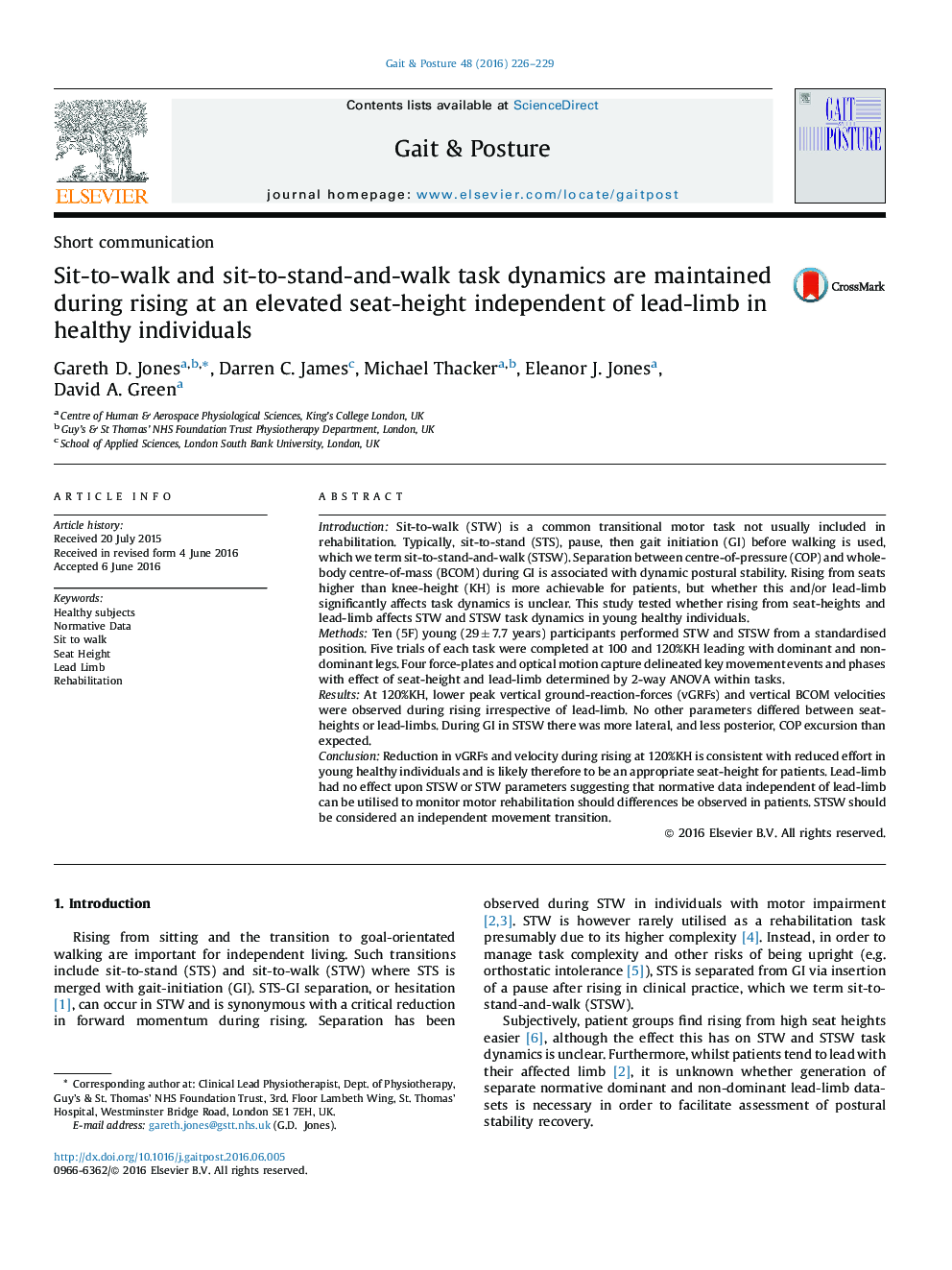| کد مقاله | کد نشریه | سال انتشار | مقاله انگلیسی | نسخه تمام متن |
|---|---|---|---|---|
| 4055812 | 1603847 | 2016 | 4 صفحه PDF | دانلود رایگان |
• Sit-to-walk (STW) and sit-to-stand-and-walk (STSW) are rise to walk transitions.
• Healthy subjects require less vertical force to rise from a higher seat height.
• Neither seat-height or lead-limb affect STW or STSW dynamics in healthy subjects.
• Normative data independent of lead-limb may inform rise to walk rehabilitation.
• Gait initiation (GI) in STSW is distinctive from GI following quiet-standing.
IntroductionSit-to-walk (STW) is a common transitional motor task not usually included in rehabilitation. Typically, sit-to-stand (STS), pause, then gait initiation (GI) before walking is used, which we term sit-to-stand-and-walk (STSW). Separation between centre-of-pressure (COP) and whole-body centre-of-mass (BCOM) during GI is associated with dynamic postural stability. Rising from seats higher than knee-height (KH) is more achievable for patients, but whether this and/or lead-limb significantly affects task dynamics is unclear. This study tested whether rising from seat-heights and lead-limb affects STW and STSW task dynamics in young healthy individuals.MethodsTen (5F) young (29 ± 7.7 years) participants performed STW and STSW from a standardised position. Five trials of each task were completed at 100 and 120%KH leading with dominant and non-dominant legs. Four force-plates and optical motion capture delineated key movement events and phases with effect of seat-height and lead-limb determined by 2-way ANOVA within tasks.ResultsAt 120%KH, lower peak vertical ground-reaction-forces (vGRFs) and vertical BCOM velocities were observed during rising irrespective of lead-limb. No other parameters differed between seat-heights or lead-limbs. During GI in STSW there was more lateral, and less posterior, COP excursion than expected.ConclusionReduction in vGRFs and velocity during rising at 120%KH is consistent with reduced effort in young healthy individuals and is likely therefore to be an appropriate seat-height for patients. Lead-limb had no effect upon STSW or STW parameters suggesting that normative data independent of lead-limb can be utilised to monitor motor rehabilitation should differences be observed in patients. STSW should be considered an independent movement transition.
Journal: Gait & Posture - Volume 48, July 2016, Pages 226–229
